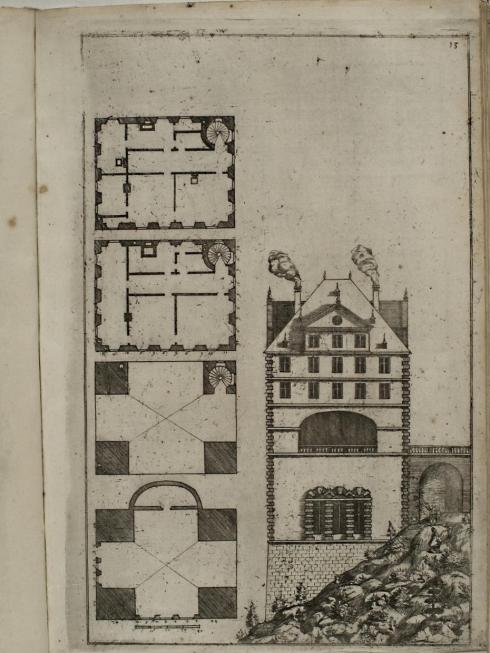It’s almost shameful to follow up a post on my garden with one that is acknowledged to have been one of the most beautiful in early modern Europe, but be assured I am suggesting no comparison! A seventeenth-century German garden called the Hortus Palatinus (the Garden of the Palatinate) was so beautiful, so majestic, and such a bold expression of the mastery of nature that contemporaries referred to it as the 8th wonder of the world. Somehow, it’s all the more legendary because it was such a fleeting creation: elaborately planned by French engineer extraordinaire Salomon de Caus for the challenging terrain adjacent to Heidelberg Castle over a five-year period prior to 1619, it was installed that year and perhaps lasted a year or two before becoming a victim of the Thirty Years’ War (1618-1648) that ravaged much of central Europe. Fortunately the image and elements of the garden were captured in de Caus’s book, entitled Hortus Palatinus, which has been digitized by the University of Heidelberg.
Engraving by Matthäus Merian from the Hortus Palatinus (1620); painting by Jacques Fouquières, circa 1620.
The garden was commissioned by Frederick V, Prince-Elector of the Palatinate and the briefly-reigning “Winter King” of Bohemia, as a romantic tribute to his new bride, Elizabeth Stuart, the eldest daughter of James VI and I of Scotland and England. De Caus, an exiled French Huguenot who was a favorite of the Stuarts and had served as Elizabeth’s tutor, seems to have possessed a variety of talents: he is mathematician, civil,mechanical, and hydraulic engineer, landscape architect, and horticulturist all at the same time. The Heidelberg garden was not only a schlossgarten carved out of the earth, it was a walled world of waterworks, moving statues, and mechanical birds, all enhancing its wondrous reputation. So too did its romantic associations: Frederick and Elizabeth seem to have had that rare royal marriage that was actually based on affection, and the surviving “Elizabeth Gate” , supposedly erected overnight in 1615 on the orders of the Prince-Elector as a surprise gift to his wife, is a living testament to (at least their early) relationship.
Frederick V and Elizabeth, early 17th century line engraving by Balthasar Moncornet, National Portrait Gallery, London; the Elizabeth Gate at Heidelberg.
The ultimate legacy of the garden is de Caus’ 1620 book, published about the same time that its namesake was being destroyed! The amazing illustrations of Matthäus Merian (among others, apparently) bring us into the garden and its world, and preserves it forever.
More images from the Hortus Palatinus at the University of Heidelberg, and Salomon de Caus’ design for a mechanical bird, from his earlier work, Les raisons des forces mouvantes (1615).














July 1st, 2012 at 2:33 am
Mechanical birds!!! I love the irony in that, gorgeous post.